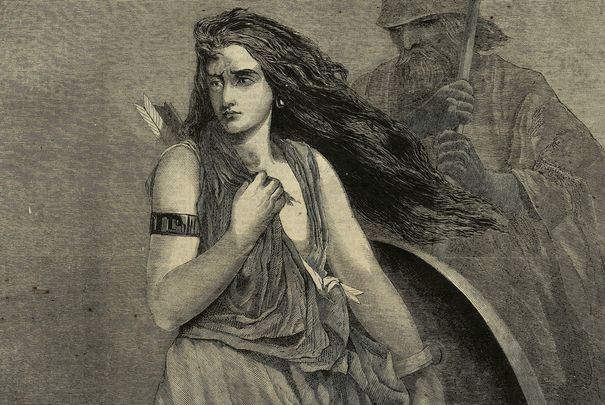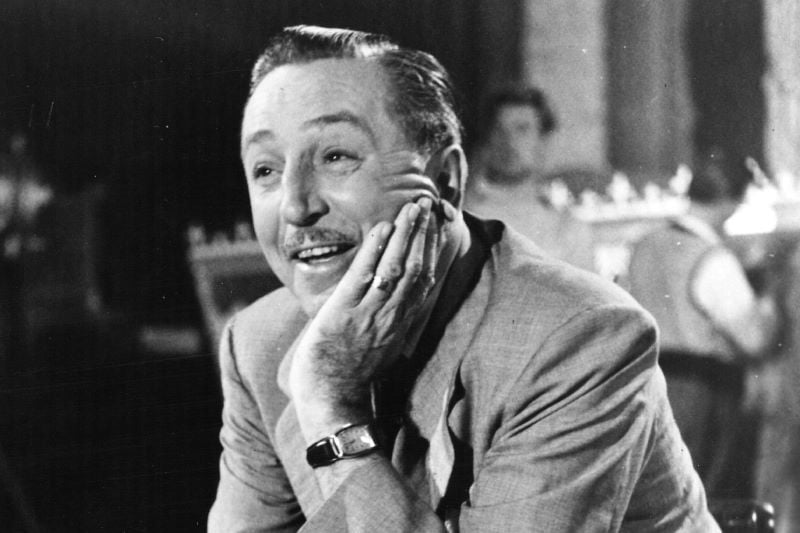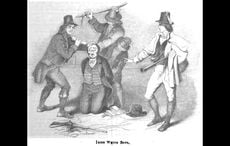Leon Ó Cathasaigh looks at the legendary "Deirdre of the Sorrows" and how it describes so much more than a tale of failed love.
The tragic tale of Deirdre and her doomed romance with Naoise, son of Uisliu, has been told and retold in Ireland and Scotland for many generations. It dates from the heroic era when King Connor Mac Neas ruled Ulster, and the warrior Red Branch Knights were in full command of that part of Ireland.
Like many great stories, it has been adapted and changed to meet the needs of successive generations. Although it is sad and cruel in parts, it is also a story about love, hope, and resilience. It is perhaps for these qualities that Irish writers and artists have returned to the theme again and again.
Just as Shakespeare’s "Romeo and Juliet" is retold in "West Side Story," so too has Deirdre of the Sorrows inspired literature, music, and performance. The stage version by John Millington Synge remains part of the current Irish theatre repertoire. William Butler Yeats and George Russell also wrote versions of tragedy, which have also inspired many works in music, including several operas.
The story has its origins in Celtic times, predating the Christian era. Although the earliest written version dates to the ninth century, the tale has also been passed down through the oral storytelling tradition.
This article was originally published in Ireland of the Welcomes magazine. Subscribe now!
It is fitting, therefore, that the story begins in the home of the royal storyteller, Feilim. As was the custom, King Connor and his knights were invited to Feilim’s castle to be entertained for the evening. This was a great honor for the host, and he and his wife, who was expecting a child, made meticulous preparations to ensure everything would go well.
Connor arrived during a storm. He was wet, cold, and in a bad mood. However, with the help of a great fire, good food, and enthralling stories, the party came to life, and everyone, including the cranky king, seemed to be having a good time.
When Feilim’s wife went to retire for the night, the baby inside her let out a shriek that everyone heard. This was deemed an omen, and the druid Cathbad was asked to interpret its significance. He prophesied that the child would grow to be the most beautiful woman in the kingdom, but there was also a dark side, as her good looks would bring trouble and lead to bloodshed and destruction in the future.
Connor decided to place the child in care and keep her for himself. He declared that when she was old enough, he would marry her. As king, he had great power, and he claimed he was entitled to a woman of such beauty. And so, Deirdre was sent away and brought up by foster parents and a mysterious woman called Lebarcham.
It’s worth pausing here to comment on this strange prologue to the main story. It’s like a Greek tragedy where the fates predict the destiny of someone’s life. In this case, the word of the druid was unquestionable, and even before she was born, Deirdre’s fate was sealed. By this point, it is also clear to everyone that King Connor is the nasty villain of the story.
Fast-forward many years, and as predicted, Deirdre has grown into a beautiful young woman. Lebarcham protects Deirdre, keeping Conor at bay by telling him to wait another year each time he asks.
One day, as the snow fell over the winter hills, Deirdre is out walking. She sees a raven drinking the blood from a slain calf. Later, she comments that she would ‘like to love a warrior with hair as black as a raven, lips as red as calf’s blood, and a body as white as the snow’. Before thinking it through, Lebarcham points out that there is such a warrior. He is Naoise, son of Uisliu, and he was hunting nearby with his brothers. Deirdre goes to see for herself, and when she spies Naoise from afar, she knows she has found the man she desires. There and then, she was determined to charm Naoise and make him her lover in defiance of Connor.
This is what’s so wonderful about the story. At this point, Deirdre takes control of her own destiny and chooses to shape her own future.
When the two meet for the first time, they tease each other with talk of bulls and heifers. It was love at first sight for both. Naoise knew that Deirdre was intended for the old king, and at first, he was fearful of the consequences. However, her beauty and powers of persuasion were irresistible, and they eloped to Scotland, accompanied by his two brothers.
It’s easy to see why the theme of self-determination and breaking away from the clutches of a selfish old king struck a chord with the Irish nationalist movement at the beginning of the twentieth century. Ireland, like Deirdre, wanted to shape her own destiny and was no longer content to be shackled to an aging empire. JM Synge’s "Deirdre of the Sorrows" was first performed in the Abbey Theatre in Dublin in 1910. Synge died before completing the work, and it was WB Yeats who prepared the final version for the stage.
Back to the story, Deirdre and Naoise were happy in Scotland and lived there for many years. Naoise’s brothers remained with them. In Ireland, Connor was left angry and humiliated, and he would leave no stone unturned to get them to come back. He sent his best captain, Fergus, as an envoy who would guarantee their safety if they returned with him. “All is forgiven” was the message, “Connor is old, and there are no bad feelings. They would be safe.
They were wary of the treachery of the king, but in the end, they decided to accept the offer. Fergus was true to his word and fully intended to protect the couple and the two brothers. However, he did not account for the ruthless cunning and deceitfulness of Connor.
In Irish mythology, a geis is like a curse or a compulsion. It is something that you must do, and you have no choice in the matter. Fergus had a geis on him that forbade him to refuse an invitation to an ale-drinking event. This might seem such an onerous obligation, but to be clear, a geis cannot be avoided at any time or for any reason.
So when Naoise and his brothers returned under his protection, Connor invited Fergus to a drinking session, thereby forcing him to abandon his duty. Fergus would never forgive Connor for making him break his word; they became lifelong enemies and fought against each other in future wars.
Left unprotected, Naoise and his brothers were attacked by Connor’s men. They put up a gallant fight, but they were each eventually slain.
In some versions, including the stage play, Deirdre takes her own life over the grave of the three brothers. Deirdre holds a dagger to her breast and, in Synge’s words, strikes a defiant note: “it was sorrows were foretold, but great joys were my share always. In the older versions, she is taken by Connor but refuses to submit, and a year later, she jumps to her death from a moving chariot. Destiny is fulfilled.
What are we to make of this story and similar stories today? The motif of the doomed love triangle is common throughout folklore and literature. In another Irish tale, Grainne is betrothed to Fionn, who is older than her father; she refuses to accept the situation and runs away with Diarmuid. In Britain, the old King Arthur loses Guinevere to Lancelot, and Shakespeare has Anthony and Cleopatra defy Caesar. In each of these, the ark of true love always wins out. The clear message today and always is, when it comes to romance, follow your heart and let destiny take care of itself.
* Originally published in 2023 and updated in December 2025.




Comments